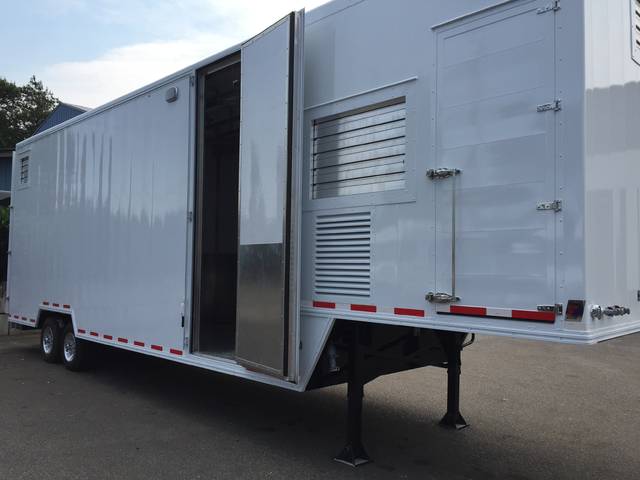After years of planning and months of delay, the Hawaii Island Meat Cooperative has started processing local meat at its mobile slaughterhouse unit. ADVERTISING After years of planning and months of delay, the Hawaii Island Meat Cooperative has started processing
After years of planning and months of delay, the Hawaii Island Meat Cooperative has started processing local meat at its mobile slaughterhouse unit.
Regular operations at the unit began April 20 and are scheduled to take place once every two weeks.
The mobile slaughterhouse, one of about 25 in the country and the first one in the state of Hawaii, is considered an important component to the long-term goal of achieving food sustainability on the Big Island.
“It’s just one little piece of the infrastructure that supports the whole infrastructure,” said Teresa Young, cooperative business development specialist for the Kohala Center. “We’re trying to increase that production to have more meat that is produced here, especially for the smaller family farms. This will allow them to have more access to that.”
The mobile slaughterhouse project was set in motion in 2011 after the creation of a task force focusing on bringing more options for locally-raised meat to the island.
The co-op itself formed in 2014. A year and $500,000 in grants later, the mobile slaughterhouse arrived.
Butchers were hired in 2016, but the wait to secure a U.S. Department of Agriculture-certified inspector to oversee operations was “much longer than anyone anticipated,” said co-op president Mike Amado.
“They’ve had a lot of challenges along the way,” Young said. “I think everybody hoped it would go faster, but it’s not an easy process.”
There are two existing slaughterhouses on the Big Island, but their production is oriented toward larger farms. Additionally, the Paauilo slaughterhouse only processes beef.
The mobile unit can process cattle, sheep, goat and pig.
“We have a request for bison,” Amado said. “It shows the versatility of a unit like this: We can actually do things that other processing facilities on the island simply can’t.”
The unit is currently based at Hokukano Ranch in Kealakekua and has a processing backlog of about four weeks.
“Right now we have this one certified inspection site,” Amado said. “We had to get that up and running. Then, as we have additional sites where we can get certified, we have the ability to move the unit there.”
For the time being, he said, the co-op’s business model is focused on commercial production: “Full carcasses, half, quarter.”
“Once you have that, then it (the meat) can go into butcher shops and restaurants,” Young said. “It just sort of balloons out as far as economic activity goes.”
A cut-and-wrap facility, which would be able to prepare meat for direct-to-consumer sales, is in the works. Some grant funding for that facility was dependent on getting the mobile slaughterhouse going, Amado said.
The cut-and-wrap component is expected to cost between $300,000 and $400,000.
“The idea is really to develop (a market) on the Big Island, and see if that works, and then start moving to the other islands,” Young said.
Email Ivy Ashe at iashe@hawaiitribune-herald.com.



